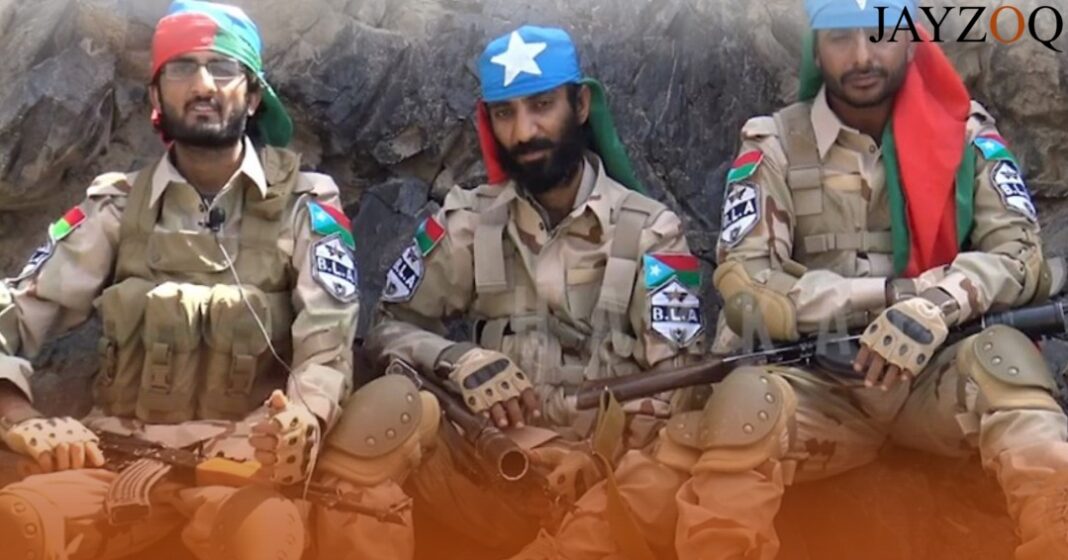On 22nd December, the Baloch icon of resistance, Karima Baloch, was found dead by the Toronto Police Service. As a vocal advocate for Baloch rights and missing persons, Karima rose to popularity through her unwavering devotion to the Baloch cause. She was forced into exile in 2015 and was granted asylum in Canada, where she lived till her death. The Canadian police forces have cleared the case of foul play, however, the circumstances of her death remain deeply suspicious. Moreover, the establishment and its apologists remain adamant to dismiss the Balochistan conflict as a mere Indian (RAW) backed conspiracy and people like Karima, its agents. Therefore, in a country plagued by historical amnesia, it is imperative to understand the history of the conflict.
Under the British Raj, the tribal chiefs of Balochistan were allowed a certain degree of autonomy. Therefore, Balochistan’s succession to Pakistan was based upon a distinct memory and hope of self-rule, which was later denied. The seeds of conflict were sown in 1948 when military action was taken to make Kalat an official part of Pakistan. While the Khan of Kalat finally agreed to the succession, the people of Kalat rejected it. Thus, the first Baloch rebellion broke out which the military was quick to suppress. When Ayub executed Baloch rebels in complete defiance of the safe conduct agreements, the insurgency resurfaced under the organization of Baloch People’s Liberation Front (BPLF). Yet again, the military responded with brute force, using aerial attacks that often killed innocent civilians.
The conflict reached its peak under Bhutto’s government. In 1970, during Balochistan’s provincial elections, Bhutto’s party (PPP) failed to achieve a single seat in the provincial government, while NAP was able to form a government under the leadership of Ataullah Mengal. Bhutto reacted to this victory by dissolving the NAP government in 1973. Two years later, NAP was banned and the growing elements of anger and radicalism adjoined the BPLF which led a militant movement. Unsurprisingly, the military crushed the growing militant movement killing an estimated 5000 militants and hundreds of civilians (1973-77). Unleashing this savage conquest for the center’s domination, Bhutto and the military increased Baloch resentment and turned the militants into heroes. Seeing this savagery of the military Ahmed Faraz wrote his poem, “Pesh Awar Qaatiloun”.
After the military’s outright refusal to let police interrogate an army officer, in the rape case of Dr. Shazia Khalid at Sui Gas plant. The Baloch insurgency was once again reignited. “So, Dr. Shazia and Mr. Khalid said, the authorities ordered them to leave the country, and warned that if they stayed, they would be killed — by government “agencies” — and that no one would even find their bodies” – The New York Times. Controversially, Musharraf decided to label the accused officer (Captain Hammad) “not guilty” without any prior evidence. This ignited a storm of outrage and armed revolt under the leadership of Nawab Akbar Bughti. The protests disrupted much of the gas supply to the country and brought it to a halt. The military’s response resulted in 59 civilian casualties and the murder of Bugti, who is now an eternal symbol of resistance.

While the armed insurgency has reduced, it is still active, as seen in the most recent attack on the Frontier Corps (FC) in Balochistan.
The fundamental reasons for the Baloch insurgency and resentment lie in its economic and political conditions. Balochistan is a land that constitutes 44% of Pakistan’s total landmass. However, only 12 million of Pakistan’s total population and 56% of the Baloch population live in the province. This population gap is largely due to a lack of development (infrastructure) and basic facilities such as electricity and gas. Although Balochistan is rich in mineral resources such as coal, oil, and gas, the Baloch argue, its resources are exploited. When gas was discovered in 1950, it was distributed to Punjab and Karachi, while locals were only given access in 1980. Today, the province receives only 17% of its gas while the rest is distributed across the country.
Therefore, the people of Balochistan argue for provincial autonomy and control, as it argues that the state is exploitative of Baloch resources. Although there is a provincial government, Baloch nationalists denounce it as a tool of the establishment. “There is no “provincial purview (over) political and economic decisions”. All our decisions are made for us by Islamabad” – Dr. Abdul Hayee Baloch, Crisis Group Report. Moreover, the continuously growing military presence in Balochistan has created an unpleasant environment. The military is accused of suppressing voices of dissidence by often kidnapping and killing Baloch activists. While the military rejects the claim, Baloch nationalists claim 5000 people have gone missing. Numerous protests have occurred on the matter, however, they are rarely reported in the mainstream media.
The military has failed to learn from its misadventures in Bangladesh. If this approach of ‘what we say goes’ does not change then the days of what is left of Pakistan are limited.







